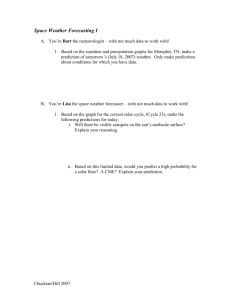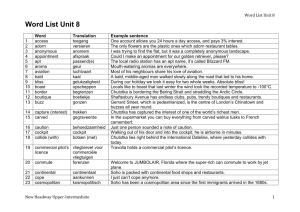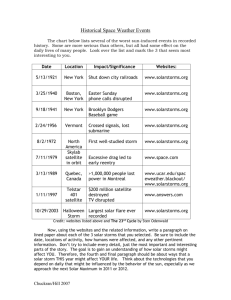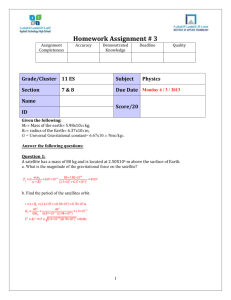doc - MIT Haystack Observatory
advertisement
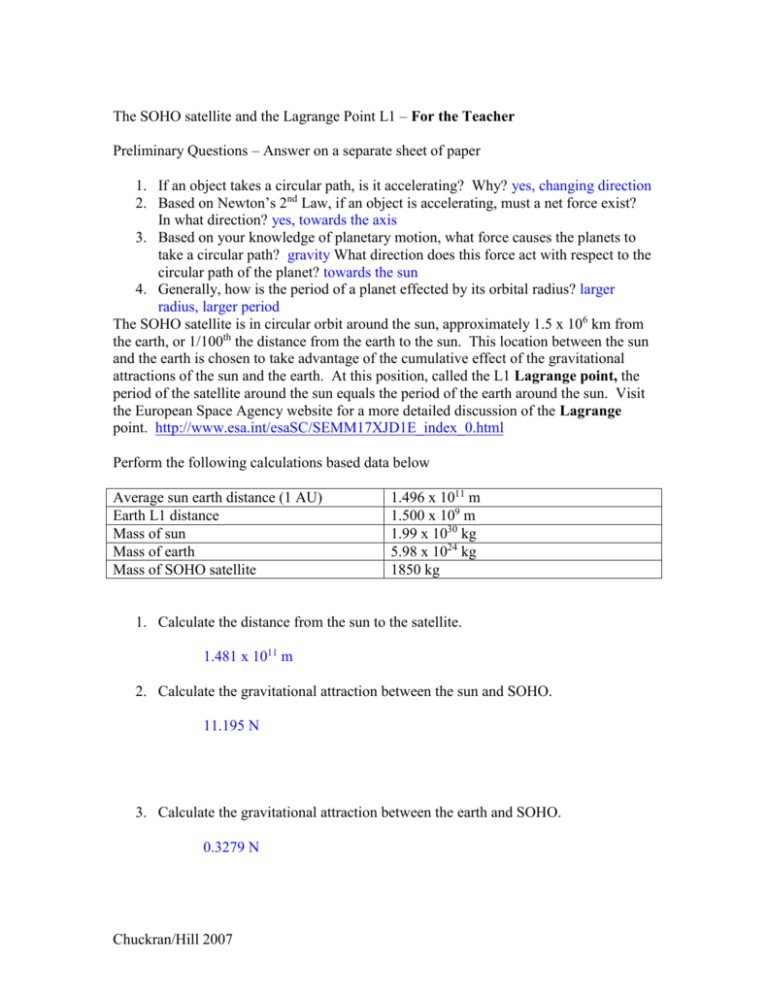
The SOHO satellite and the Lagrange Point L1 – For the Teacher Preliminary Questions – Answer on a separate sheet of paper 1. If an object takes a circular path, is it accelerating? Why? yes, changing direction 2. Based on Newton’s 2nd Law, if an object is accelerating, must a net force exist? In what direction? yes, towards the axis 3. Based on your knowledge of planetary motion, what force causes the planets to take a circular path? gravity What direction does this force act with respect to the circular path of the planet? towards the sun 4. Generally, how is the period of a planet effected by its orbital radius? larger radius, larger period The SOHO satellite is in circular orbit around the sun, approximately 1.5 x 106 km from the earth, or 1/100th the distance from the earth to the sun. This location between the sun and the earth is chosen to take advantage of the cumulative effect of the gravitational attractions of the sun and the earth. At this position, called the L1 Lagrange point, the period of the satellite around the sun equals the period of the earth around the sun. Visit the European Space Agency website for a more detailed discussion of the Lagrange point. http://www.esa.int/esaSC/SEMM17XJD1E_index_0.html Perform the following calculations based data below Average sun earth distance (1 AU) Earth L1 distance Mass of sun Mass of earth Mass of SOHO satellite 1.496 x 1011 m 1.500 x 109 m 1.99 x 1030 kg 5.98 x 1024 kg 1850 kg 1. Calculate the distance from the sun to the satellite. 1.481 x 1011 m 2. Calculate the gravitational attraction between the sun and SOHO. 11.195 N 3. Calculate the gravitational attraction between the earth and SOHO. 0.3279 N Chuckran/Hill 2007 4. Calculate the net force on SOHO from the earth and the sun. 10.867 N 5. What effect does this net force have on the satellite? it is the centripetal force causing circular motion 6. Using Newton’s 2nd Law for circular motion, calculate the period of the SOHO satellite around the sun. How does the period compare to the period of the earth around the sun? T = (4mπ2R/ΣF)^0.5 = 3.155 x 107 s same 7. Calculate the orbital period of a satellite at the L1 distance from the sun without the effects of the earth. 3.108 x 107 s Questions (answer on separate paper) 1. SOHO is a solar observatory. The data it collects is often used as an early warning for solar storms. Why would having it orbit at the L1 point be necessary? needs to collect the data before it reaches the earth 2. Suppose the SOHO satellite measures the solar wind velocity to be 590 km/s. Determine the time it will take for the solar wind to reach the earth. 42 min 3. Data is transmitted to the earth from SOHO at the speed of light (300,000,000 m/s). Calculate the time it takes for this data to reach the earth. 5 s Chuckran/Hill 2007

